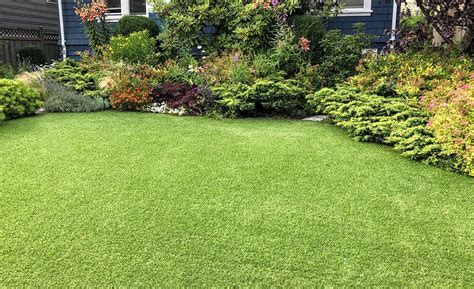
Facing persistent drought conditions, the city of Santa Fe, New Mexico, is offering homeowners financial incentives to replace their water-guzzling lawns with drought-resistant landscaping. The program, aimed at conserving water and promoting sustainable practices, provides up to $3 per square foot of grass removed, making it an appealing option for residents looking to reduce their water bills and environmental impact.
Santa Fe is betting on the initiative to significantly reduce the city’s water consumption amid growing concerns about water scarcity in the arid Southwest. “We’re really trying to create a culture of conservation here in Santa Fe,” said Water Conservation Manager Christine Chavez in a statement. The city hopes the program will encourage homeowners to adopt xeriscaping, a landscaping method that utilizes native plants and efficient irrigation techniques to minimize water usage.
The Details of the Rebate Program
The “Cash for Grass” program offers a substantial financial incentive, with homeowners eligible to receive up to $3 per square foot of turfgrass removed and replaced with water-wise landscaping. The maximum rebate amount is capped at $3,000 per residential property, providing ample opportunity for homeowners to transform a significant portion of their yards.
To qualify for the rebate, homeowners must meet specific requirements. First, the area being converted must currently be covered in living turfgrass. Second, the replacement landscaping must adhere to xeriscaping principles, which prioritize drought-tolerant plants, efficient irrigation, and mulch to conserve water. The city provides detailed guidelines on acceptable plant species and irrigation methods to ensure the new landscaping meets water conservation goals.
The application process involves several steps. Homeowners must first submit an application to the city’s Water Conservation Office, including a detailed site plan and photographs of the existing lawn. Once the application is approved, homeowners can begin removing the turfgrass and installing the new landscaping. After the project is completed, a city inspector will verify that the work meets the program requirements before issuing the rebate.
The program also stipulates that the newly installed landscaping must be maintained for a minimum of five years. This requirement ensures that homeowners remain committed to water conservation and that the benefits of the program are sustained over the long term. Regular inspections may be conducted to verify compliance with the maintenance requirements.
The Rationale Behind the Program: Addressing Water Scarcity
Santa Fe, like many communities in the arid Southwest, faces increasing challenges related to water scarcity. The region is experiencing prolonged drought conditions, exacerbated by climate change, which has led to reduced river flows, depleted reservoirs, and increased competition for water resources. The city relies on a combination of surface water and groundwater to meet its water needs, but both sources are vulnerable to drought.
Turfgrass lawns are a major consumer of water in residential landscapes. Traditional lawns require frequent watering, especially during the hot summer months, which puts a strain on the city’s water supply. By encouraging homeowners to replace their lawns with drought-resistant landscaping, Santa Fe aims to significantly reduce residential water consumption and alleviate pressure on its water resources.
The “Cash for Grass” program is part of a broader strategy to promote water conservation throughout the city. Other initiatives include public education campaigns, water-efficient appliance rebates, and restrictions on outdoor watering. The city also works with local businesses and organizations to promote water-wise landscaping practices.
Xeriscaping: A Sustainable Landscaping Approach
Xeriscaping is a landscaping method designed to minimize water usage through the selection of drought-tolerant plants, efficient irrigation techniques, and the use of mulch. The term “xeriscaping” comes from the Greek word “xeros,” meaning dry. Xeriscaping principles can be applied to create beautiful and sustainable landscapes that require minimal irrigation.
One of the key elements of xeriscaping is the selection of native or adapted plants that are well-suited to the local climate and soil conditions. Native plants are naturally adapted to the environment and require less water, fertilizer, and pesticides than non-native species. Adapted plants, while not native, have been introduced to the region and have proven to thrive in the local climate.
Efficient irrigation is another important aspect of xeriscaping. Drip irrigation and micro-sprinklers are preferred over traditional sprinkler systems because they deliver water directly to the plant roots, minimizing water loss through evaporation. Smart irrigation controllers can also be used to adjust watering schedules based on weather conditions and plant needs.
Mulch is used to cover the soil around plants, which helps to retain moisture, suppress weeds, and regulate soil temperature. Organic mulches, such as wood chips and shredded bark, also improve soil fertility as they decompose.
Environmental and Economic Benefits of Lawn Conversion
The “Cash for Grass” program offers a range of environmental and economic benefits. From an environmental perspective, the program helps to conserve water, reduce pesticide and fertilizer use, and create habitats for native wildlife. Lawns require significant amounts of water, especially in arid climates. By converting lawns to xeriscapes, homeowners can significantly reduce their water consumption and help to protect local water resources.
Lawns also require regular applications of pesticides and fertilizers to maintain their appearance. These chemicals can pollute waterways and harm beneficial insects and wildlife. Xeriscapes, on the other hand, require minimal use of pesticides and fertilizers, which reduces the risk of environmental pollution.
Xeriscapes can also provide habitat for native wildlife, such as birds, butterflies, and bees. Native plants provide food and shelter for these animals, which helps to support biodiversity.
From an economic perspective, the program can help homeowners save money on their water bills and reduce their landscaping maintenance costs. Lawns require frequent mowing, watering, and fertilizing, which can be expensive. Xeriscapes, on the other hand, require minimal maintenance, which can save homeowners time and money.
The rebate offered by the city provides an immediate financial incentive for homeowners to convert their lawns. Over the long term, the savings on water bills and maintenance costs can more than offset the initial investment in xeriscaping.
Community Impact and Future Implications
The “Cash for Grass” program has the potential to create a significant positive impact on the Santa Fe community. By encouraging homeowners to adopt water-wise landscaping practices, the program can help to conserve water, protect the environment, and create more sustainable neighborhoods.
The program can also serve as a model for other communities in the arid Southwest that are facing similar challenges related to water scarcity. By demonstrating the effectiveness of lawn conversion programs, Santa Fe can inspire other cities and towns to adopt similar initiatives.
The success of the “Cash for Grass” program will depend on a number of factors, including the level of participation from homeowners, the effectiveness of the program’s outreach and education efforts, and the availability of funding. The city is committed to providing the resources and support necessary to ensure the program’s success.
The long-term implications of the program could be far-reaching. If a significant number of homeowners convert their lawns to xeriscapes, the city could see a substantial reduction in its overall water consumption, which would help to ensure the long-term sustainability of its water resources. The program could also help to create a more environmentally conscious community, where residents are more aware of the importance of water conservation and sustainable landscaping practices.
The initiative is not without its potential drawbacks. Some residents may be resistant to the idea of replacing their lawns, either because they prefer the aesthetic of a traditional lawn or because they are concerned about the cost and effort involved in converting their yards. The city will need to address these concerns through education and outreach efforts.
Addressing Concerns and Misconceptions
One common misconception about xeriscaping is that it is unattractive or that it only involves rocks and cacti. In reality, xeriscapes can be beautiful and diverse landscapes that incorporate a wide variety of plants, including flowers, shrubs, and trees. The key is to select plants that are well-suited to the local climate and soil conditions and to arrange them in a visually appealing way.
Another concern that some residents may have is that xeriscaping is expensive. While it is true that there is an initial investment involved in converting a lawn to a xeriscape, the long-term savings on water bills and maintenance costs can more than offset the initial investment. The city’s rebate program provides a financial incentive that can help to make xeriscaping more affordable for homeowners.
The city is also working to address concerns about the availability of qualified landscaping professionals who are knowledgeable about xeriscaping. The city offers training and certification programs for landscapers to help them develop the skills and knowledge necessary to design and install xeriscapes.
Expert Opinions and Community Reactions
Local experts and community leaders have expressed strong support for the “Cash for Grass” program. They believe that the program is a necessary step to address the challenges of water scarcity in Santa Fe and to promote sustainable landscaping practices.
“This program is a win-win for the city and for homeowners,” said Maria Lopez, a local environmental advocate. “It helps to conserve water, reduces pollution, and creates more beautiful and sustainable landscapes.”
Some residents have expressed enthusiasm for the program and have already begun planning their lawn conversions. Others are more cautious, but are interested in learning more about the program and its benefits.
“I’ve been thinking about converting my lawn for a while now,” said John Smith, a Santa Fe homeowner. “This program seems like a great opportunity to finally do it. I’m excited about the prospect of saving money on my water bill and creating a more environmentally friendly yard.”
The Future of Water Conservation in Santa Fe
The “Cash for Grass” program is just one part of Santa Fe’s broader efforts to promote water conservation. The city is also investing in other initiatives, such as water-efficient appliance rebates, public education campaigns, and restrictions on outdoor watering.
The city is also exploring new technologies and strategies to improve its water management practices. These include rainwater harvesting, graywater reuse, and advanced metering infrastructure.
Santa Fe is committed to ensuring the long-term sustainability of its water resources. By investing in water conservation programs and exploring new technologies, the city is working to create a more resilient and sustainable community for future generations.
Frequently Asked Questions (FAQ)
-
How much money can I receive through the “Cash for Grass” program?
The program offers a rebate of up to $3 per square foot of turfgrass removed and replaced with water-wise landscaping. The maximum rebate amount is capped at $3,000 per residential property. For example, if you replace 1,000 square feet of lawn, you could receive a rebate of $3,000. If you replace 500 square feet, you could receive $1,500. The actual amount you receive will depend on the square footage of the area you convert and the specific requirements of the program.
-
What are the requirements for the replacement landscaping?
The replacement landscaping must adhere to xeriscaping principles, which prioritize drought-tolerant plants, efficient irrigation, and mulch. The city provides detailed guidelines on acceptable plant species and irrigation methods. The main goal is to reduce water consumption and create a sustainable landscape. You should consult the city’s guidelines before starting your project to ensure that you meet all the requirements. Generally, this means selecting native or adapted plants that require minimal watering, using drip irrigation or micro-sprinklers, and applying mulch to retain moisture.
-
How do I apply for the rebate?
The application process involves several steps. First, you must submit an application to the city’s Water Conservation Office, including a detailed site plan and photographs of the existing lawn. Once the application is approved, you can begin removing the turfgrass and installing the new landscaping. After the project is completed, a city inspector will verify that the work meets the program requirements before issuing the rebate. It’s crucial to get pre-approval before starting any work to ensure that your project is eligible for the rebate.
-
What happens if I don’t maintain the new landscaping?
The program stipulates that the newly installed landscaping must be maintained for a minimum of five years. Regular inspections may be conducted to verify compliance with the maintenance requirements. If you fail to maintain the landscaping, you may be required to repay the rebate. This requirement ensures that homeowners remain committed to water conservation and that the benefits of the program are sustained over the long term. Proper maintenance includes things like weeding, pruning, and ensuring that the irrigation system is functioning correctly.
-
Is this program only for homeowners, or can businesses participate too?
According to the original news article, this specific program is geared towards homeowners. However, it is best to contact the Santa Fe Water Conservation Office directly or check their website for any potential programs or incentives that might be available for businesses looking to implement similar water-saving landscaping changes. They may have other programs that cater to commercial properties.
Expanded Context and Analysis:
Beyond the immediate benefits of water conservation and cost savings, the “Cash for Grass” program represents a broader shift in how communities approach landscaping and resource management in the face of climate change. The traditional American lawn, with its demands for water, fertilizer, and constant maintenance, is increasingly recognized as an unsustainable relic of a bygone era. Replacing these lawns with drought-resistant alternatives is not just about saving water; it’s about creating more resilient and ecologically sound landscapes that benefit both the environment and the community.
The program also highlights the importance of government incentives in driving behavioral change. While many homeowners may be aware of the environmental benefits of xeriscaping, the financial cost of converting a lawn can be a significant barrier. By offering a rebate, the city of Santa Fe is making it easier for homeowners to make the switch and encouraging wider adoption of sustainable landscaping practices.
The success of the “Cash for Grass” program will depend not only on the availability of funding and the number of homeowners who participate, but also on the quality of the education and outreach efforts that support the program. Homeowners need to be informed about the benefits of xeriscaping, the requirements of the program, and the resources available to help them convert their lawns. The city can play a key role in providing this information through workshops, online resources, and partnerships with local nurseries and landscaping professionals.
Moreover, the program has the potential to stimulate the local economy by creating jobs in the landscaping and horticulture industries. As more homeowners convert their lawns to xeriscapes, there will be increased demand for drought-tolerant plants, efficient irrigation systems, and landscaping services. This can create new opportunities for local businesses and workers.
The challenges facing Santa Fe are not unique. Many communities in the arid Southwest and other parts of the world are grappling with the impacts of climate change, including prolonged droughts, reduced water supplies, and increased wildfire risk. The “Cash for Grass” program offers a valuable model for how these communities can address these challenges by promoting sustainable landscaping practices and incentivizing water conservation.
Looking ahead, it is likely that we will see more communities adopting similar programs as the impacts of climate change become more severe. These programs may take different forms, depending on the local context and the specific challenges that each community faces. However, the underlying principle will remain the same: to encourage homeowners and businesses to adopt sustainable landscaping practices that reduce water consumption and protect the environment.
The long-term success of these programs will depend on a number of factors, including the availability of funding, the effectiveness of education and outreach efforts, and the level of community support. However, by investing in these programs, communities can take a significant step towards creating a more sustainable and resilient future.
The Psychological and Social Dimensions
Beyond the practical considerations of water conservation and cost savings, there are also psychological and social dimensions to the “Cash for Grass” program that are worth exploring. For many homeowners, the traditional lawn represents more than just a patch of grass; it is a symbol of status, a source of pride, and a place for recreation and relaxation. Giving up the lawn can be a difficult decision, even for those who are aware of the environmental benefits of xeriscaping.
The city of Santa Fe needs to be sensitive to these psychological and social factors when promoting the “Cash for Grass” program. It is important to acknowledge the emotional attachment that some homeowners have to their lawns and to emphasize the positive aspects of xeriscaping, such as its beauty, its low maintenance requirements, and its ability to attract wildlife.
The program can also be framed as an opportunity for homeowners to express their values and to contribute to the well-being of their community. By converting their lawns to xeriscapes, homeowners can demonstrate their commitment to water conservation and their concern for the environment. They can also inspire their neighbors and friends to adopt similar practices.
Moreover, the city can create a sense of community around the “Cash for Grass” program by organizing workshops, garden tours, and other events that bring together homeowners who are interested in xeriscaping. These events can provide opportunities for homeowners to share ideas, learn from each other, and build a sense of collective identity.
The social dimension of the program is also important. The appearance of a neighborhood can have a significant impact on property values and the overall quality of life. If a few homeowners convert their lawns to xeriscapes, it may not have a noticeable effect on the neighborhood as a whole. However, if a critical mass of homeowners participate in the program, it can transform the look and feel of the neighborhood and create a more sustainable and attractive environment.
Integrating Technology for Enhanced Efficiency
The “Cash for Grass” program can be further enhanced by integrating technology to improve efficiency and monitoring. For example, the city could develop a mobile app that allows homeowners to easily submit applications, track their progress, and access educational resources. The app could also be used to collect data on water savings and other environmental benefits.
Smart irrigation controllers can also play a key role in maximizing the water conservation benefits of xeriscaping. These controllers use sensors and weather data to automatically adjust watering schedules based on plant needs and environmental conditions. This can help to prevent overwatering and reduce water waste.
Remote sensing technologies, such as drones and satellite imagery, can be used to monitor the health and condition of xeriscapes and to identify areas where irrigation is needed. This can help to ensure that the landscaping is maintained properly and that water is used efficiently.
Data analytics can be used to track the overall impact of the “Cash for Grass” program and to identify areas where improvements can be made. The city can analyze data on water consumption, plant health, and other factors to evaluate the effectiveness of the program and to make adjustments as needed.
Addressing Equity and Accessibility Concerns
It is important to ensure that the “Cash for Grass” program is equitable and accessible to all homeowners, regardless of their income, race, or ethnicity. The city should take steps to address any potential barriers that may prevent some homeowners from participating in the program.
For example, low-income homeowners may not be able to afford the initial cost of converting their lawns to xeriscapes, even with the rebate. The city could consider offering additional financial assistance to these homeowners, such as grants or low-interest loans.
The city should also ensure that the program is accessible to homeowners who do not speak English or who have disabilities. This may involve providing translated materials, offering assistance with the application process, and making accommodations for homeowners with mobility impairments.
Outreach efforts should be targeted to reach all segments of the community, including those who may not be aware of the program or who may be hesitant to participate. The city can partner with community organizations, churches, and other groups to reach these individuals.
Comparative Analysis with Similar Programs
Many cities and regions across the United States and around the world have implemented similar “Cash for Grass” or turf removal rebate programs. A comparative analysis of these programs can provide valuable insights into best practices and lessons learned.
For example, the Metropolitan Water District of Southern California has a long-standing turf removal rebate program that has been credited with saving billions of gallons of water. The program offers a rebate of $2 per square foot of turf removed and replaced with drought-tolerant landscaping.
The city of Las Vegas, Nevada, has also implemented a successful turf removal rebate program. The program offers a rebate of $3 per square foot of turf removed and replaced with water-smart landscaping.
A comparison of these programs reveals that the most successful programs are those that offer a generous rebate, provide clear guidelines and support, and conduct effective outreach and education efforts.
Long-Term Vision: A Sustainable Landscape Ethic
The ultimate goal of the “Cash for Grass” program and similar initiatives is to create a sustainable landscape ethic that values water conservation, biodiversity, and ecological resilience. This requires a shift in mindset from viewing lawns as status symbols to recognizing the importance of creating landscapes that are in harmony with the environment.
This vision extends beyond individual homeowners to encompass the entire community. It involves creating public spaces that are designed to conserve water, support wildlife, and provide a sense of beauty and tranquility. It also involves educating children and adults about the importance of sustainable landscaping practices.
By fostering a sustainable landscape ethic, we can create communities that are more resilient to the impacts of climate change, more environmentally friendly, and more livable for all. The “Cash for Grass” program is a step in the right direction, but it is just one piece of a larger puzzle. We need to continue to innovate, collaborate, and invest in sustainable landscape practices to create a better future for ourselves and for generations to come.









